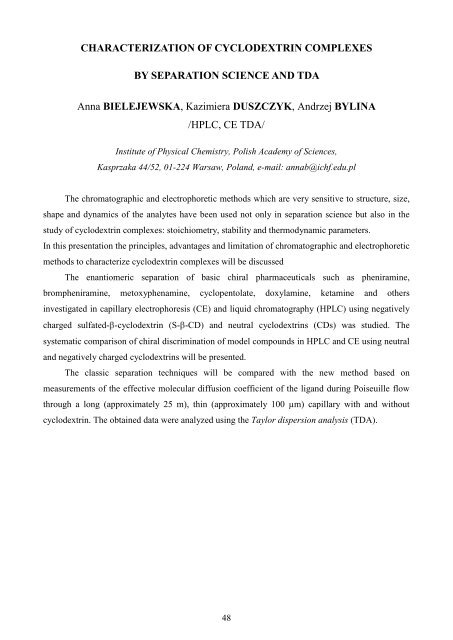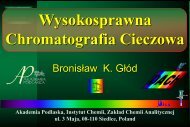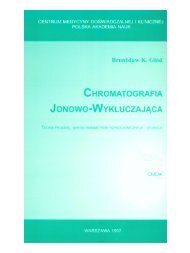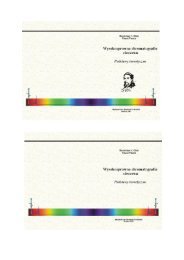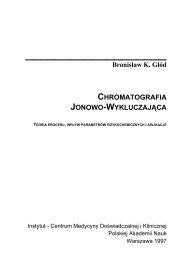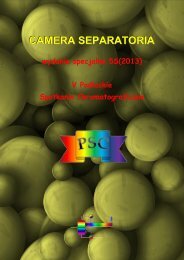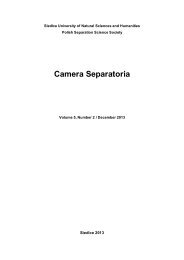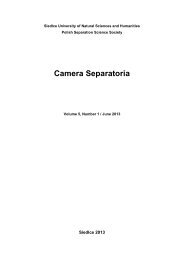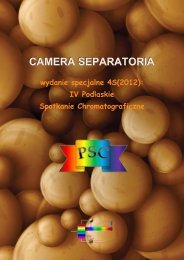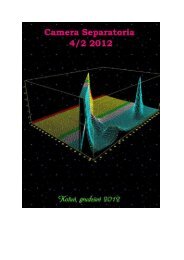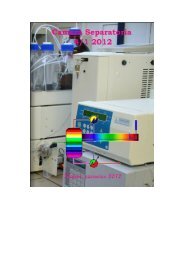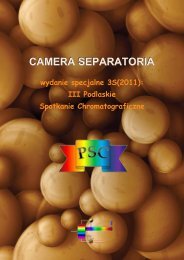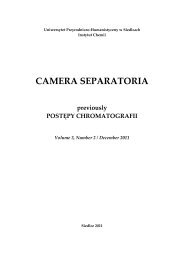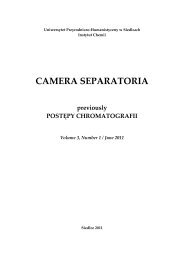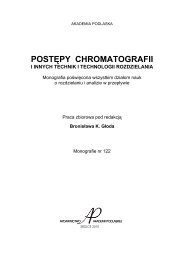CamSep 2 S
You also want an ePaper? Increase the reach of your titles
YUMPU automatically turns print PDFs into web optimized ePapers that Google loves.
CHARACTERIZATION OF CYCLODEXTRIN COMPLEXES<br />
BY SEPARATION SCIENCE AND TDA<br />
Anna BIELEJEWSKA, Kazimiera DUSZCZYK, Andrzej BYLINA<br />
/HPLC, CE TDA/<br />
Institute of Physical Chemistry, Polish Academy of Sciences,<br />
Kasprzaka 44/52, 01-224 Warsaw, Poland, e-mail: annab@ichf.edu.pl<br />
The chromatographic and electrophoretic methods which are very sensitive to structure, size,<br />
shape and dynamics of the analytes have been used not only in separation science but also in the<br />
study of cyclodextrin complexes: stoichiometry, stability and thermodynamic parameters.<br />
In this presentation the principles, advantages and limitation of chromatographic and electrophoretic<br />
methods to characterize cyclodextrin complexes will be discussed<br />
The enantiomeric separation of basic chiral pharmaceuticals such as pheniramine,<br />
brompheniramine, metoxyphenamine, cyclopentolate, doxylamine, ketamine and others<br />
investigated in capillary electrophoresis (CE) and liquid chromatography (HPLC) using negatively<br />
charged sulfated- -cyclodextrin (S- -CD) and neutral cyclodextrins (CDs) was studied. The<br />
systematic comparison of chiral discrimination of model compounds in HPLC and CE using neutral<br />
and negatively charged cyclodextrins will be presented.<br />
The classic separation techniques will be compared with the new method based on<br />
measurements of the effective molecular diffusion coefficient of the ligand during Poiseuille flow<br />
through a long (approximately 25 m), thin (approximately 100 µm) capillary with and without<br />
cyclodextrin. The obtained data were analyzed using the Taylor dispersion analysis (TDA).<br />
48


